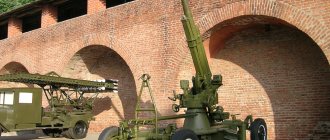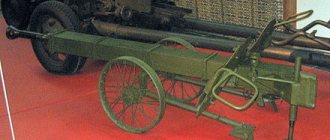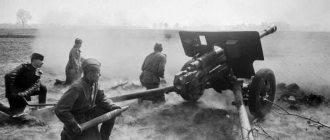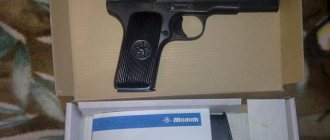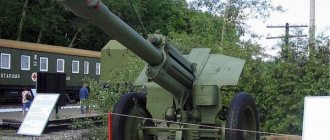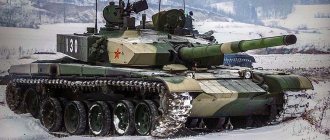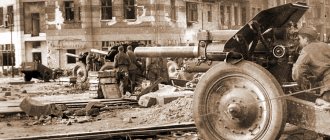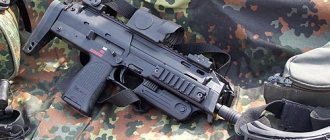Artillery of Russia and the world, guns photos, videos, pictures watch online, along with other states, introduced the most significant innovations - the transformation of a smooth-bore gun, loaded from the muzzle, into a rifled gun, loaded from the breech (lock). The use of streamlined projectiles and various types of fuses with adjustable settings for the response time; more powerful propellants such as cordite, which appeared in Britain before the First World War; the development of rolling systems, which made it possible to increase the rate of fire and relieved the gun crew from the hard work of rolling into the firing position after each shot; connection in one assembly of a projectile, propellant charge and fuse; the use of shrapnel shells, which, after the explosion, scatter small steel particles in all directions.
Russian artillery, capable of firing large shells, acutely highlighted the problem of weapon durability. In 1854, during the Crimean War, Sir William Armstrong, a British hydraulic engineer, proposed a method of scooping wrought iron gun barrels by first twisting iron rods and then welding them together using a forging technique. The gun barrel was additionally reinforced with wrought iron rings. Armstrong created a company where they made guns of several sizes. One of the most famous was his 12-pounder rifled gun with a 7.6 cm (3 in) barrel and a screw lock mechanism.
The artillery of the Second World War (WWII), in particular the Soviet Union, probably had the largest potential among European armies. At the same time, the Red Army experienced the purges of Commander-in-Chief Joseph Stalin and endured the difficult Winter War with Finland at the end of the decade. During this period, Soviet design bureaus adhered to a conservative approach to technology. The first modernization efforts came with the improvement of the 76.2 mm M00/02 field gun in 1930, which included improved ammunition and replacement barrels on parts of the gun fleet, the new version of the gun was called the M02/30. Six years later, the 76.2 mm M1936 field gun appeared, with a carriage from the 107 mm.
Heavy artillery of all armies, and quite rare materials from the time of Hitler’s blitzkrieg, whose army crossed the Polish border smoothly and without delay. The German army was the most modern and best equipped army in the world. The Wehrmacht artillery operated in close cooperation with the infantry and aviation, trying to quickly occupy territory and deprive the Polish army of communication routes. The world shuddered upon learning of a new armed conflict in Europe.
The artillery of the USSR in the positional conduct of combat operations on the Western Front in the last war and the horror in the trenches of the military leaders of some countries created new priorities in the tactics of using artillery. They believed that in the second global conflict of the 20th century, mobile firepower and precision fire would be the decisive factors.
Like a cannon: penguins shoot their feces almost one and a half meters
Not only scientific interest, but also concern for people, Japanese scientists - Hiroyuki Tajima from Kochi University and Fumiya Fujisawa, working at the Katsurahama Aquarium - explained their desire to determine what distance penguins shoot feces. And they shoot - for hygienic purposes. Straight from their nests. So as not to shit in them. Smart birds.
The fact that volleys are heard every now and then in penguin colonies has long been no secret to ornithologists and polar explorers. But how far do the “shells” fly? No one knew. But it would be necessary - especially for those employees who care for penguins in zoos, oceanariums and aquariums, but have little idea of how far it is safe to approach them from the rear. To avoid coming under fire. Surely Fujisawa is familiar with the problem firsthand.
By the way, Antarctic artillerymen - bombardiers, as Peter the Great would put it, have already attracted the attention of scientists. At one time, the physics of their shooting was studied by German and Hungarian scientists - Victor Benno Meyer-Rochow of International University Bremen, Germany and the University of Oulu, Finland; and Jozsef Gal of Loránd Eötvös University, Hungary) . In 2005, their research was awarded the funny Ig Nobel Prize in the field of fluid dynamics. The laureates calculated the pressure that penguins create inside themselves in order to fire a shot. But its range was never determined. The Japanese filled the gap.
Calculation of the pressure created inside the penguin, due to which the shot will be fired.
The subjects of Tajima and Fujisawa's research were Humboldt penguins (Spheniscus humboldti). First of all, the Japanese clarified the pressure created in the “gun”. According to them, the bird, whose height does not exceed 70 centimeters and weighs 4 kilograms, pumps itself up to about 28 kilopascals - this is about a third of the atmosphere. A person, having created such pressure, would shoot at 3 meters.
The initial speed of the penguin projectile is almost 8 kilometers per hour. If the penguins do not climb to high ground, then they fire in a circular manner at an area 40 centimeters away. But as a rule, their nests are located on rocky hillocks - at a height of about 2 meters. From there, feces fly 134 centimeters.
A “shell” fired from a hill flies further.
The physicists posted their scientific article, which the Daily Mail refers to, on the preprint website of Cornell University.
BY THE WAY
The armor is strong and our tanks are clean
It will be strange if the Japanese are not given the Ig Nobel Prize. It is just as strange as the fact that our compatriot Alexander Semenov, a senior researcher at the St. Petersburg State Polytechnic University, an honorary inventor of Europe, a candidate of technical sciences, has not yet been awarded it.
Even 10 years ago, Semenov received a patent for “A method for removing waste from an isolated habitable compartment of a military facility and a device for its implementation.” To put it less clerically, the inventor figured out how to remove, say, from a tank, from an armored personnel carrier, or even from a dugout, feces produced by tank crews or other military personnel. At one time, Semenov’s ideas greatly impressed the British press.
Semenov's patent application.
It is unlikely that the inventor was inspired by the example of penguins, but their method and his are not much different. The essence is approximately the same - shoot feces away from the place of their production. The only difference was that the penguins fired without a shell “substance,” so to speak, and the Russian innovator proposed placing it, the “substance,” in special projectiles of a suitable caliber and firing them. Preferably towards the enemy.
Schematic diagram: under the tanker there is a device that helps fill shells with waste from his life.
In Semenov’s opinion—quite common sense, by the way—“in addition to damaging factors, the significance of which in this case is secondary, you can get a positive military-psychological effect.” That is, demoralize the enemy by bombarding him with feces.
Awards and recognition await their heroes.
AND AT THIS TIME
Scientists complain about penguins that “spoil the air” with laughing gas
The fact that king penguin colonies are literally immersed in clouds of nitrous oxide or laughing gas, as this chemical compound with the formula N2O is also called, was told by Bo Elberling, a professor in the department of geological sciences and natural resource management at the University of Copenhagen, who led a team of scientists studying the penguins on the Antarctic island of South Georgia. Penguins fart laughing gas. It is released in even greater quantities by feces flying out of their nests and interacting with the soil. Read about how scientists and the penguins themselves are having fun at the same time in our material.
The Dora and Gustav guns are giant guns. (8 photos)
The Dora and Gustav guns are giant guns.
The super-heavy railway-mounted artillery gun "Dora" was developed by the Germans in the late 30s of the last century. This weapon was intended to destroy fortifications on the borders of Germany with Belgium and France (Maginot Line). In 1942, "Dora" was used to storm Sevastopol, and in 1944 to suppress the uprising in Warsaw.
The development of German artillery after World War I was limited by the Treaty of Versailles. According to the provisions of this treaty, Germany was prohibited from having any anti-aircraft and anti-tank guns, as well as guns whose caliber exceeded 150 mm. Thus, the creation of large-caliber and powerful artillery was a matter of honor and prestige, the leaders of Nazi Germany believed.
Based on this, in 1936, when Hitler visited one of them, he categorically demanded that the company's management design a super-powerful weapon that would be capable of destroying the French Maginot Line and Belgian border forts, for example, Eben-Emale. According to the requirements of the Wehrmacht, a cannon shell must be capable of penetrating 7 m thick concrete, 1 m thick armor, 30 m hard ground, and the maximum range of the gun should be 25-45 km. and have a vertical guidance angle of +65 degrees.
The group of designers of the Krupp concern, which began creating a new super-powerful gun according to the proposed tactical and technical requirements, was headed by Professor E. Muller, who had extensive experience in this matter. The development of the project was completed in 1937, and in the same year the Krupp concern was given an order for the production of a new 800mm caliber gun. Construction of the first gun was completed in 1941. The gun, in honor of E. Muller’s wife, was given the name “Dora”. The second gun, which was named “Fat Gustav” in honor of the management of the company Gustav von Bohlen and Halbach Krupp, was built in mid-1941. In addition, a third 520 mm caliber gun was designed. and a trunk length of 48 meters. It was called "Long Gustav". But this weapon was not completed.
In 1941, 120 km. west of Berlin, at the Rügenwalde-Hillersleben training ground, guns were tested. Adolf Hitler himself, his comrade-in-arms Albert Speer, as well as other high army officials were present at the tests. Hitler was pleased with the test results.
Although the guns did not have some mechanisms, they met the requirements that were specified in the technical specifications. All tests were completed by the end of the 42nd year. The gun was delivered to the troops. By the same time, the company's factories had produced over 100 800mm caliber shells.
Some design features of the gun.
The locking of the barrel bolt, as well as the delivery of projectiles, were carried out by hydraulic mechanisms. The gun was equipped with two lifts: for cartridges and for shells. The first part of the barrel was with a conical thread, the second with a cylindrical thread.
The gun was mounted on a 40-axle conveyor, which was located on a double railway track. The distance between the tracks was 6 meters. In addition, another railway track was laid on the sides of the gun for installation cranes. The total weight of the gun was 1350 tons. To fire, the gun needed an area up to 5 km long. The time spent preparing the gun for firing consisted of choosing a position (could reach 6 weeks) and assembling the gun itself (about 3 days).
Transportation of implements and maintenance personnel.
The gun was transported by rail. Thus, “Dora” was delivered to Sevastopol by 5 trains in 106 cars:
1st train: service (672nd artillery division, about 500 people), 43 cars;
2nd train, auxiliary equipment and erection crane, 16 cars;
3rd train: cannon parts and workshop, 17 cars;
4th train: loading mechanisms and barrel, 20 cars;
5th train: ammunition, 10 cars.
Combat use.
In World War II, Dora took part only twice.
The first time the gun was used was to capture Sevastopol in 1942. During this campaign, only one case was recorded of a successful hit by a Dora shell, which caused an explosion of an ammunition depot located at a depth of 27 meters. The remaining Dora shots penetrated the ground to a depth of 12 meters. After the explosion of the shell, a drop-shaped shape with a diameter of about 3 meters was formed in the ground, which did not cause much harm to the defenders of the city. In Sevastopol, the gun fired 48 shells.
After Sevastopol, "Dora" was sent to Leningrad, and from there to Essen for repairs.
The second time Dora was used was in 1944 to suppress the Warsaw Uprising. In total, the gun fired more than 30 shells into Warsaw.
The end of Dora and Gustav.
On April 22, 1945, the advanced units of the Allied army were 36 km away. from the city of Auerbach (Bavaria) they discovered the remains of the Dora and Gustav guns blown up by the Germans. Subsequently, everything that was left of these giants of the 2nd World War was sent for melting down.

